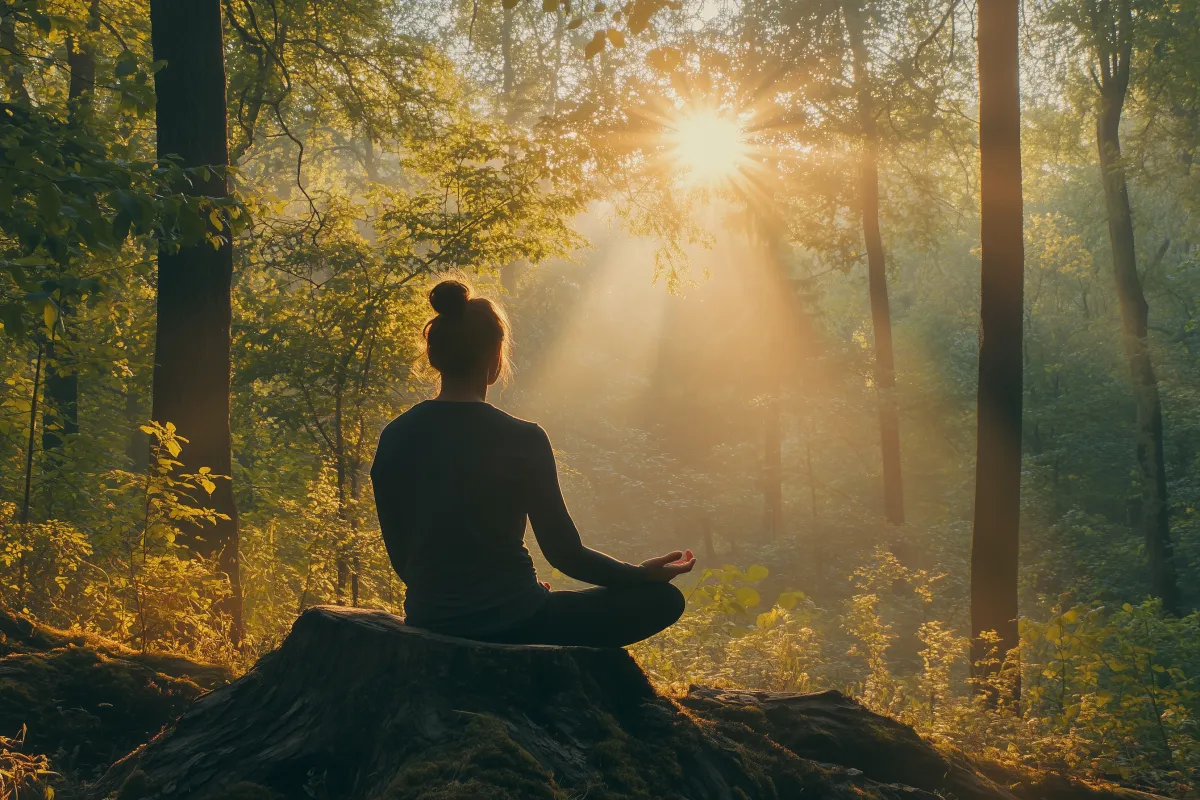
5 Ways Forest Therapy Supports Your Dry January Goals
5 Ways Forest Therapy Supports Your Dry January Goals
Dry January is an opportunity to reset, establish healthier habits, and explore alternative ways to unwind and find joy. Forest therapy, or mindful time spent in nature, is an excellent companion on this journey. Here are five ways forest therapy can support your Dry January goals by boosting mood, reducing stress, fostering social connection, and promoting overall well-being.
1. Natural Mood Elevation:
How Forest Compounds Can Boost Serotonin Levels
One of the most compelling benefits of forest therapy is its ability to elevate mood naturally. Spending time in the forest exposes us to phytoncides, organic compounds released by trees and plants that help increase serotonin levels, the “feel-good” hormone. These compounds also stimulate the immune system, creating a holistic sense of well-being.
Studies show that people feel calmer, happier, and more content after time spent in nature, thanks to increased serotonin and decreased cortisol levels. Forest therapy can help you experience these natural mood boosts, which may reduce the urge to turn to alcohol for stress relief or happiness.
2. Stress Reduction:
Alternatives to Alcohol for Unwinding and Relaxation
For many people, alcohol has become a go-to option for stress relief, but nature offers a much healthier alternative. Forest therapy is a proven way to reduce stress and unwind. The sights, sounds, and smells of the forest create a sense of calm, lowering blood pressure and reducing levels of the stress hormone cortisol.
Forest therapy practices such as mindful walking, breathing exercises, and simply observing your surroundings offer a natural form of relaxation. Regular sessions in nature can help replace the desire for alcohol, giving you a sustainable, healthy way to de-stress and unwind.
3. Social Connection:
Forest Therapy as a Non-Alcoholic Group Activity
Dry January can feel challenging in social settings, but forest therapy is a wonderful way to stay connected without alcohol. Participating in group forest therapy sessions provides a mindful, shared experience that strengthens social bonds and creates lasting memories. Whether it’s a group walk, a shared picnic, or a quiet meditation together in the forest, nature-based activities foster a deep sense of connection and togetherness.
Engaging with others in a natural setting also allows for more meaningful conversations and a supportive environment that encourages sobriety and wellness. So, invite a friend or two to join you, and enjoy the peaceful, shared experience that forest therapy offers.
4. Mindful Consumption:
Transferring Forest Mindfulness to Eating and Drinking Habits
One of the cornerstones of forest therapy is mindfulness—being fully present and aware of each sensory experience. By practicing mindfulness in nature, you can also develop greater awareness in other areas of life, including your eating and drinking habits.
After practicing mindful observation in the forest, try to carry that same level of awareness into your meals. Focus on the flavors, textures, and sensations of food and drink, savoring each bite or sip. This practice encourages mindful consumption, helping you enjoy your meals more fully and reduce impulsive choices, making it easier to maintain healthy, intentional eating and drinking habits throughout Dry January and beyond.
5. Improved Sleep:
How Forest Exposure Can Regulate Sleep Patterns Disrupted by Alcohol
Alcohol can disrupt sleep patterns, but regular time in nature can support a healthier, more restful sleep cycle. Exposure to natural light, particularly in the morning, helps regulate circadian rhythms, which play a crucial role in sleep quality. Spending time outdoors can also reduce insomnia symptoms, allowing you to wake up feeling more refreshed.
Forest therapy not only improves mood and reduces stress but also promotes the kind of restful sleep that many people crave. By replacing evening drinks with a calming walk in nature or enjoying a forest therapy session during the day, you can create a sleep-supportive routine that leaves you feeling energized and well-rested.
Dry January is an opportunity to explore healthier habits and reconnect with yourself in meaningful ways. By integrating forest therapy into your wellness routine, you’re giving yourself the tools to experience lasting well-being. Whether you’re seeking mood elevation, social connection, or simply a new way to unwind, the forest is here to support your journey. Embrace the peaceful beauty of nature this month, and let it help you achieve your goals.


